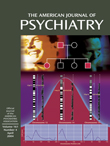To the Editor: Franca Centorrino, M.D., and associates
(1) compared the use of antipsychotics in psychiatric inpatients using data from 1989, 1993, and 1998. They found that the proportion of days the patients had received more than one antipsychotic during inpatient treatment had increased from 1.7% in 1989 to 20% in 1998. The most common combinations were typical antipsychotics added to atypical primary agents, and the authors suggested that this might reflect incomplete confidence in the effectiveness of monotherapy with atypical agents. Unfortunately, the authors did not report on other medications besides antipsychotics, and I wonder if a substantial increase had also occurred for these.
As the authors stated, polypharmacotherapy is a growing international phenomenon, and incomplete trust in the effectiveness of atypical antipsychotics obviously is just one of many reasons fostering polypharmacy. I recently reviewed the available literature on the number of psychotropic drugs administered during inpatient treatment
(2) and found that the proportion of patients (including all diagnoses) being treated with monotherapy has declined significantly during the last few decades. Studies originating in 1980 or before reported monotherapy in 48%, studies between 1981 and 1990 in 31%, and studies between 1991 and 2000 in 20%. Despite all caveats concerning the small database of available studies, there is little doubt that a powerful trend toward polypharmacy is operating. The reasons for this are certainly quite complex, as follows:
1. A more sophisticated diagnostic process leading to diagnoses of multiple comorbid conditions makes more treatments necessary.
2. There are far more drugs available, both new and old, in new indications, and all are intensely promoted by the pharmaceutical industry.
3. Inpatient treatment has to deal with the most severe and often therapy-resistant cases, for which an increasing number of combination and augmentation therapies have been recommended and are widely used in spite of little empirical evidence.
4. A decreasing number of psychiatric beds and decreasing lengths of stay of inpatient treatment add even more pressure to strive for the most effective treatment.
Psychiatrists have to be aware that their clinical practice is far from evidence based. Two conclusions are important. First, clinicians should monitor the trend toward polypharmacy in their treatment regimens extremely critically. Second, we need studies investigating at least those combinations of drugs that are most widely used, e.g., the combination of atypical and typical antipsychotics.

